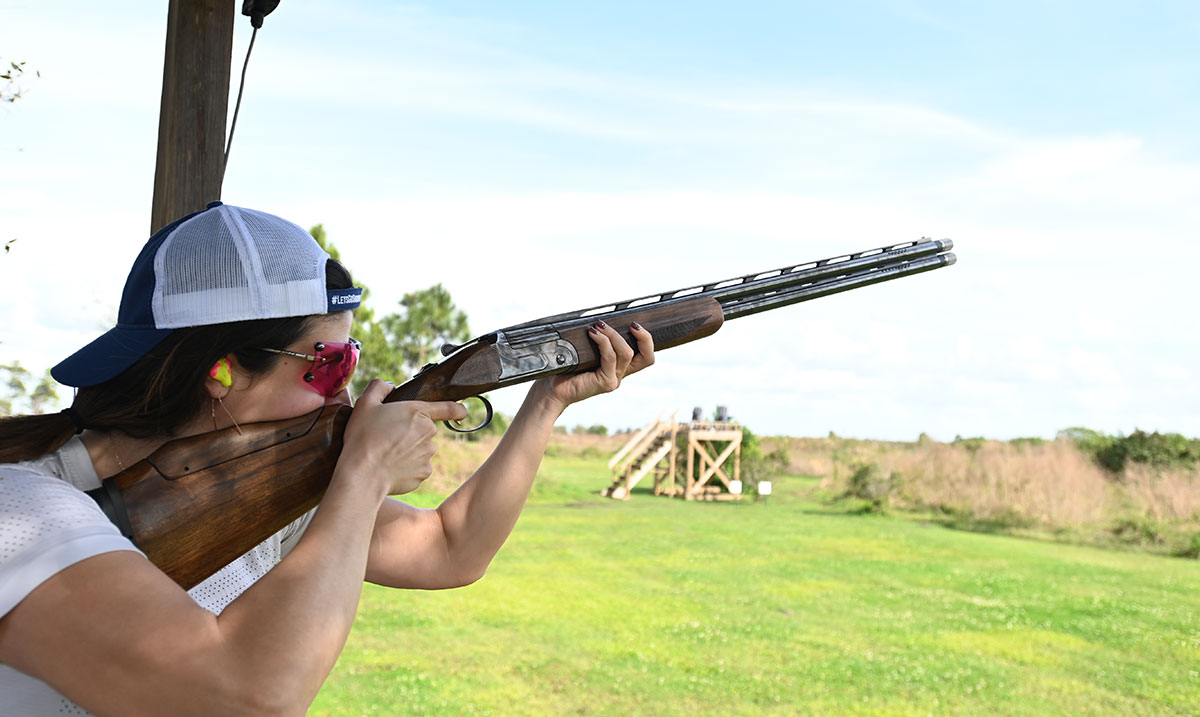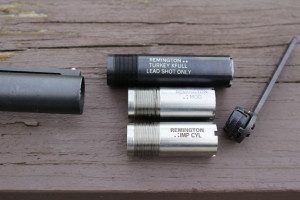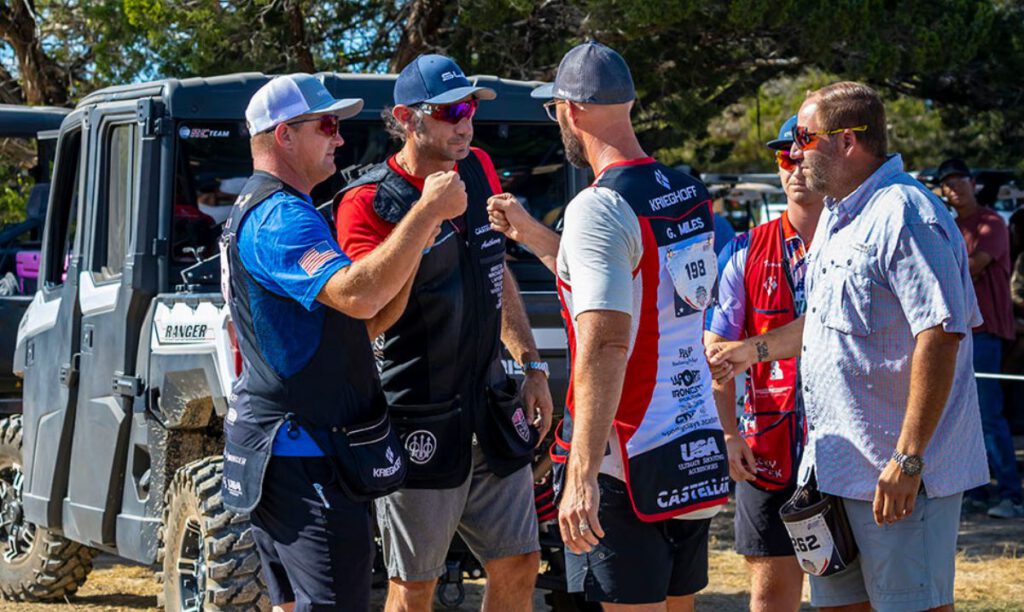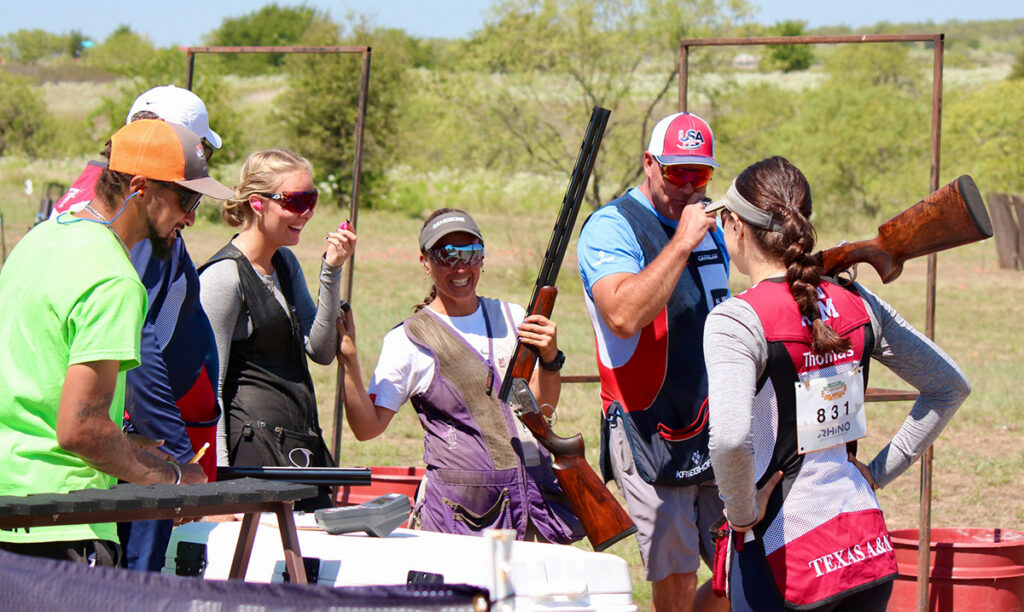
Shotgun chokes are an essential part of any shotgun for hunters and shooting sports enthusiasts who want to maximize their shotgun’s performance. These small devices screw into the end of the shotgun barrel and help to control the spread of the shot as it leaves the gun. By changing the constriction of the choke, the shooter can modify the pattern of the shot to suit different shooting situations. The use of shotgun chokes provides a range of benefits, including improved accuracy, versatility, and recoil control.
When you pull the trigger of your shotgun, a column of round shot pellets leaves the barrel and spreads out into a “pattern.” This pattern widens as the group of shot pellets gets further away from the muzzle. At some point, that pattern will be spread apart too far to hit targets at the extreme edge of the shotgun’s effective range; there will be too much space between the individual pellets in the pattern, and all that space is opportunity for a target to escape unscathed.
To combat that effect, gun designers began to constrict or “choke” the shotgun bore in order to keep the pellets in a tighter group—the pattern. They placed this choke in the last two inches or so of the barrel at the muzzle end. As the shot column traveled down the barrel after firing, it would enter the choked region, where the column or group of pellets would compress before exiting. To cover different game animals, shooting competitions and shotshell payloads, gun designers also developed varying degrees of constriction. The tighter the choke, the tighter the shot column is squeezed and the further that shot column will travel as effective group once it leaves the barrel.
Fixed Versus Interchangeable Shotgun Chokes
A shotgun barrel’s choke will be located at the muzzle end of the barrel and you will encounter them in two different designs. The oldest way is called a “fixed choke.” Many side-by-side and older single barrels will have fixed chokes, meaning that their barrels have the choke constriction built-in to the end of the barrel at the muzzle end. The barrels of a side-by-side would usually have two different constrictions. For instance, one barrel would be Improved Cylinder, while the second would be a tighter Modified. A combination of Modified and Full was also common. The barrels were designed this way to accommodate game bird hunting. The shooter of such a double-barreled gun would fire the most open barrel at the first, closer birds to flush from a covey, then the second more tightly choked barrel at either a second bird (which would be farther away than the first) or as a way to better connect after a first missed shot.

The fixed-choke barrel on this old Winchester shotgun is clearly marked as having a Full constriction.
Most modern shotguns of all styles now come with what are known as “interchangeable chokes.” These are short tubes of metal tighter in diameter than the shotgun’s barrel. These chokes screw into the barrel, those barrels being threaded on their insides near the muzzle. Interchangeable chokes are the most popular choice among shooters today, as they allow the shooter to change chokes to fit the shooting situation at hand.
Common Shotgun Choke Constrictions
Chokes today range from the most open, called “Cylinder,” to varying degrees of ultra-tight Extra-Full. Let’s take a look at the most common you’ll encounter for the most popular shotgun gauge, the 12-gauge.

These interchangeable chokes in a variety of constrictions fit a Remington shotgun. The wrench at the right helps with installation and removal.
A shotgun barrel with Cylinder choke actually has no constriction at all. Its diameter is the same as the barrel’s internal dimension. This choke throws the widest pattern, so it is considered the most open choke. Cylinder is good for close shots on clay targets and game birds, and is also the most popular choice for those who keep a shotgun for self-defense and use buckshot.
The Improved Cylinder choke is the first level of constriction up from Cylinder. It is 0.010-inch narrower in diameter than the barrel diameter. This provides just a little constriction to the shot column as it exits the barrel, enabling that group of shot to maintain a nice, wide pattern for fast flushing game birds at distances to about 30 yards. It is also a popular choice for skeet targets and sporting clays targets thrown at those same distances.
A Modified choke, the next tightest, will provide a bore reduction of 0.020-inch. It makes a good choice for an all-around shotgun choke. It works well on clays from 30 to 45 yards or so and can handle most of the flushing game birds. I’ve used a Modified choke for waterfowl, pheasants, and even turkeys. In fact, for years it was the only choke I owned, until I was educated about the shotguns with interchangeable chokes.
The Full choke was, for decades, the waterfowl hunter’s best friend. With a bore reduction of just about 0.035-inch, this tight choke allowed a shotgunner to hit geese and ducks at the 40-yard mark and beyond. The tradeoff with a choke this tight is that it’s usually too tight for close-in targets, those closer than 25 yards. You’ll either miss because the pattern hasn’t widened enough to hit a moving target, or you’ll absolutely annihilate a target with an almost literal fistful of lead. Such a hit is fine on a clay target, but if you’re a hunter looking for a pheasant dinner, you could be picking shot out of a pile of shredded meat.
As I said, the Full choke used to be the realm of the duck and goose hunter. But in the 1991, federal law banned lead shot for hunting waterfowl. Waterfowl hunters initially had to turn to shot made of steel if they wanted to hunt. The problem with steel is that it’s much harder than lead. Now, remember I said that the shot column traveling down the barrel will compress as it passes through the choke? That’s okay for lead shot, because it’s such a soft metal. But steel pellets don’t cooperate as well, and through a Full choke that results in excessive pressures that can damage a barrel. Waterfowlers have since adjusted by using looser chokes that produce good patterns at long range with the myriad non-lead shotshell choices they have available to them.
That might make you think the Full choke fell into disuse. But it didn’t. Today, the Full choke is extremely popular for hunting turkeys. The tight pattern ensures a quick and humane kill on these large game birds, which are naturally wary and are often taken at distances of 40 to 50 yards. Indeed, choke makers and gun designers who specialize in guns and gear for turkey hunters have created an entire class of Full chokes, with varying degrees of tightness beyond the constriction standard.
In between the major choke types are what I call the “boutique” chokes. For example, you can find a Skeet choke, whose constriction falls midway between Improved Cylinder and Modified. Many sporting clays enthusiasts are fond of Improved Modified (tighter than Modified but not as tight as Full), Light Modified (tighter than Improved but not as tight as a straight Modified) and Light Full (tighter than Improved Modified, but not as tight as a straight Full.
What is Shotgun Patterning?
Why all these different constrictions? Well, because any shotgun can shoot a variety of loads from light target to heavy game. Within that variety you’ll have different amounts of shot (the shot payload) with different amounts and types of gunpowder behind them for different velocities. Through the practice known as “patterning”—firing a particular load at a regulated shotgun target and then seeing how the pellets in the payload strike that target—a competitor or hunter can discover which choke optimizes the load they’re using.
It takes some time to pattern a shotgun with even a couple chokes and a handful of different loads. Hang your target, take your shot, count the pellet hits and look at how the pellets struck the target. Then hang another target, switch loads or chokes, and repeat as often as needed to produce the best combination of choke and load. There’s a lot of walking back and forth to the target and not a lot of “fun” shooting, but such a day on the range can greatly improve your chances of an on-target hit when it counts, and it’s a great way to really get to know how your gun performs with your ammunition of choice. Remember, every gun is different and not even identical models from the same maker will shoot exactly the same. If you’re serious about getting the most out of your shotgun and ammunition, spend a day on the patterning board. The time invested will produce big dividends in the end.






